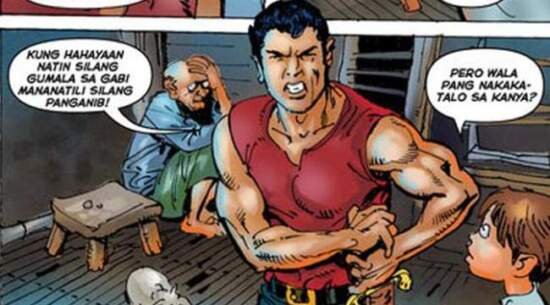Death Head #1 – 6 (review)
Dark Horse Comics, July 2015 – February 2016
Writers: Zack Keller, Nick Keller
In the 17th and 18th centuries, medical physicians in Europe who treated victims of the bubonic plague wore beak-like masks with glass eye openings, the design of which was attributed to Louis XIII’s chief physician Charles De Lorme. The masks contained various scented materials and straw intended to filter putrid air, which doctors of the time believed was the primary vehicle for the plague.
This practical purpose of the beak masks was probably unknown to the people the medics treated. The mask coupled with the heavy waxed fabric overcoat that some (not all) plague doctors used would have made for a menacing visual, which given the context, most likely made the physicians an unwelcome sight to their patients – a portent of doom in the shape of a human carrion bird.
The plague doctor, both in image and in history, lay at the center of the six-issue horror miniseries “Death Head”. Written by brothers Zack and Nick Keller, this eerie horror story feels like a love letter to various horror movie sub genres, while working within the constraints of the comic book medium.
“Death Head” starts with a married couple on a trip to Shadowcliff National Park sans children. The two characters decide to look for Death Head hawkmoths and veer off their trail. They come across an abandoned town that looks to be centuries old, but shows some signs of recent use. Mistaking it for a “reenactment town,” the couple wander around and then fall into a crematorium with a massive pile of human bones. The couple exit the crematorium with some scrapes and bruises, but decided to bring home a plague mask they found in the vicinity, as evidence of their macabre experience.
Readers are then introduced to the couple’s children – the rebellious teenage daughter, who studies in a nunnery but is actually a closeted lesbian, and a young boy named Bumblebee, who is constantly bullied by his peers and only has a young female ghost as his friend. The way in which the characters are introduced is admirably economical, providing enough information without wasting too many pages.
By the time readers get to the middle of the first issue, the stage has been set. All the players are in place and out comes the story’s boogeyman: a spectral plague doctor that stalks the characters, bringing with him visions full of death and violence, as well as delivering actual violence visited upon people who are unfortunate enough to have crossed paths with the protagonists.
There is wonderful sparcity in the way “Death Head” is structured. It borrows minor elements from slasher films, zombie films, and paranormal thrillers while still retaining a tight narrative. There are points in the story that play to a horror aficionado’s thematic expectations. But the story is not cliched.
Having said that, the title’s fast pace is a double-edged sword, as it keeps the reader on edge, but it also misses gaps. It is easy to forgive some of the less important gaps in the story because it is an enjoyable read. But there are structural flaws, most notably characters suddenly introduced out of the blue, and then rushed into service as catalysts for the plot.
“Death Head” is nonetheless an engrossing puzzle where not all of the pieces fit, but those that do fit very well indeed and provide a very serviceable picture.The story it tells is solid enough to give a reader something that can be read and enjoyed on face value, but there is meat on the bone for those who wish more. Fundamentally “Death Head” is a simple story of a family caught in an ancient curse, which may or may not be biological in nature, and an immortal plague doctor that brings death and suffering to those that he visits. Except “Death Head” also shows that sometimes things are not that simple, and perspective plays a significant role in dividing the line between who is evil and who is simply misguided.



